Now is the time to get ready to assess the impact of take-all in your 2nd, 3rd or continuous wheat crop and build a risk picture for next year’s crop.
Take-all in wheat: causes, impact, and control
Take-all is a destructive root disease of wheat caused by the soil-borne fungus Gaeumannomyces tritici. It infects roots and basal stem tissues, reducing water and nutrient uptake, limiting crop growth, and causing significant yield losses. The disease thrives in temperate climates and is especially damaging in continuous wheat rotations or short cereal sequences.
Symptoms and disease development
- Blackened roots: Affected roots exhibit dark brown to black discoloration, starting from the tip and often spreading upwards.
- Stunted and yellowed plants: Plants may appear pale, stunted, and unthrifty, with symptoms most pronounced in patches across the field.
- Premature ripening: Infected plants often mature earlier than healthy ones, giving fields a patchy appearance at harvest.
- Whiteheads: In severe cases, ears of infected plants may remain empty or produce poorly filled grain.
- Patchy field appearance: Yield losses are often most visible as uneven stands and gaps in the crop.
The pathogen overwinters in crop residues and soil as mycelium. It infects new wheat roots in the following season, spreading through soil and overlapping root systems. Disease severity is typically highest in second or third wheat crops due to the buildup of fungal inoculum.
Economic impact
Yield losses from take-all can range from 5% to over 50%, depending on the severity and conditions. The disease undermines root function, leading to inefficient fertiliser use and reduced water uptake, directly affecting grain filling and harvest quality. In high-input systems, this can significantly reduce profitability.
Key risk factors
- Monoculture: Continuous wheat or short rotations increase risk.
- Soil pH: The disease is worse in alkaline soils (pH > 6.5).
- Drainage: Poor drainage and compaction stress roots and increase susceptibility.
- Volunteers and weeds: Grasses and volunteer cereals can carry the fungus.
- Weather: Mild, wet autumns favour early infection and spread.
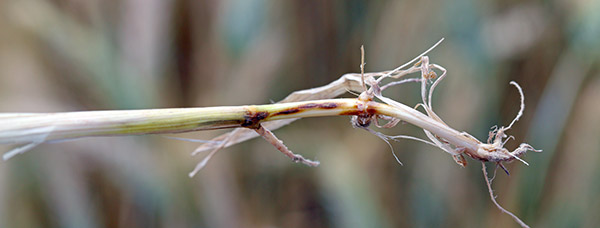
Management and prevention strategies
As no curative treatment exists, take-all is best managed through an integrated strategy focused on prevention, rotation, and soil health.
- Crop rotation
The most effective control method is rotating wheat with non-host crops such as oilseed rape, beans, peas, or linseed. These breaks reduce soil inoculum. Avoid short rotations involving cereals like barley or oats, which can still carry the pathogen. Be careful with cover crops as they can also act as host.
- Volunteer and weed control
Volunteer cereals and grassy weeds can maintain the fungus between crops. Control them through pre-sowing cultivation or herbicide applications to break the disease cycle.
- Soil and pH management
Maintain well-structured, well-drained soils. Avoid compaction and waterlogging. Since take-all thrives in alkaline soils, over-liming should be avoided, especially in known risk areas. In some cases, acidifying fertilisers like ammonium sulphate can help reduce disease pressure.
- Seed treatments
Fungicidal seed dressings, such as those containing silthiofam (Latitude®), offer partial early protection, particularly useful in high-risk second wheat situations. These are best used as part of a broader IPM approach.
Additional biostimulant e.g. Voltek or biological seed treatments e.g. Tiros Max, which improve establishment speed, boosts rooting, and increases exudation, helping to reduce soil-borne diseases.
The yield response below shows statistically the increased rooting and exudation from Voltek helps mitigate anything that impairs crop performance by attacking the roots.
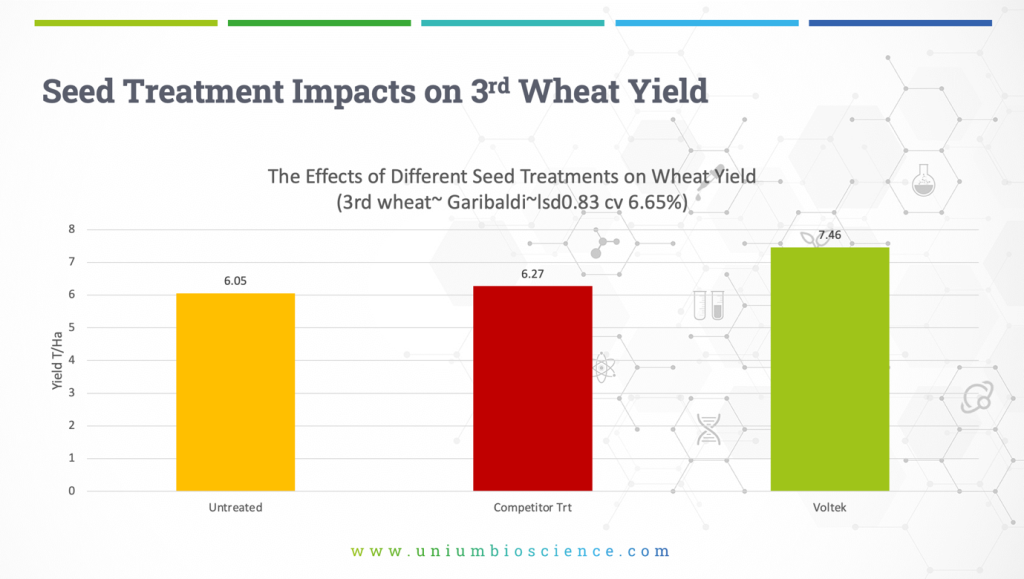
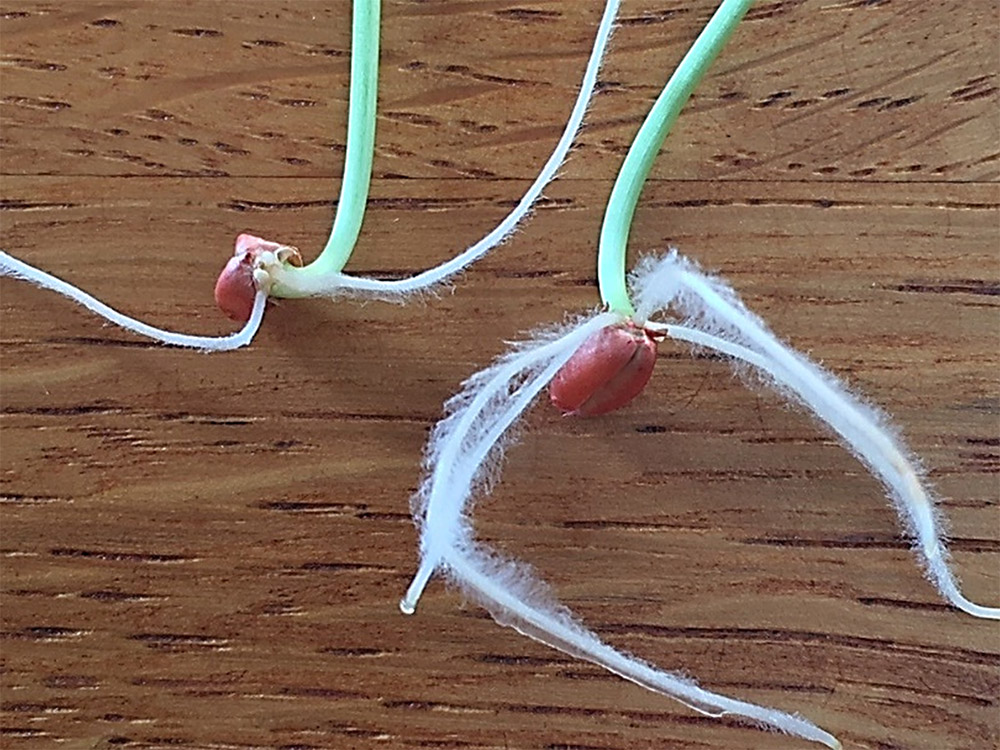
This picture clearly shows the increased rooting and also the increased lateral rooting from Voltek. More roots = more exudation = less take-all
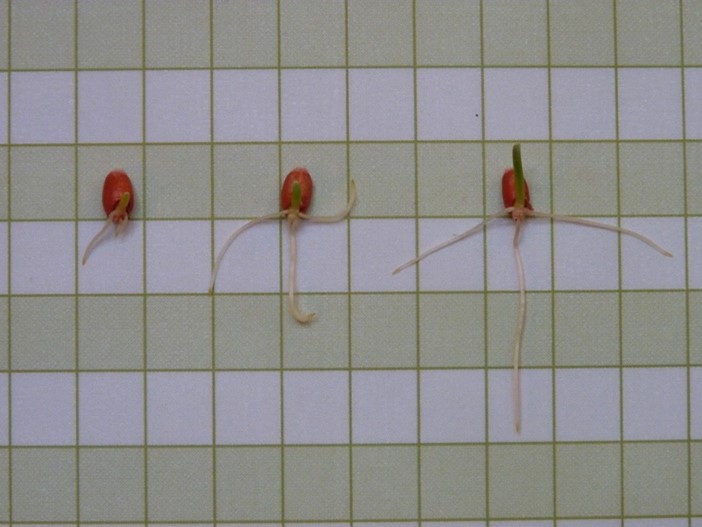
Enhancing establishment will clearly aid in mitigating the damage of take-all
- Sowing strategy
Later sowing in autumn can reduce early root infection but may lower yield potential. Optimal seed rates should be used – dense planting increases root overlap and potential spread.
- Varietal tolerance
While no varieties are fully resistant, some exhibit partial tolerance and can better compensate for root damage. Selecting less susceptible cultivars may help reduce yield losses.
- Soil Biology and biological control
Encouraging a diverse soil microbiome can enhance natural suppression. Beneficial microbes are being researched for their protective effects. Maintaining organic matter and minimising intensive tillage can support a healthier soil ecosystem. This also needs to be linked to nutrient availability for maximum effect e.g. boron, iron, nitrogen (form) copper and magnesium
- Nutrient management
Ensure adequate nitrogen and consider foliar applications of manganese in deficient soils, as take-all impairs nutrient uptake, and manganese plays a role in disease resistance.
- Maximise Rooting
Here you can see the impact of Calcium Phosphite (Calfite Extra) in boosting root structure in normal which when playing the numbers game of more roots means less impact of the disease is a real benefit. This has been effective when applied in the autumn and in the early spring when the secondary infection can take hold.

Infield trials data
The first picture shows that phosphite has no direct impact on the disease but when combined with the protective fungicide, you have more phosphite generated roots that are fungicide protected to boost yield.

The data below confirms the lab work with field data – showing that roots are the key driver to mitigate the impact of the disease and phosphite’s are one of the best biostimulants to produce roots. They trick the plant into thinking it has a transient P deficiency and thus its natural reaction is to increase rooting and importantly exudation.
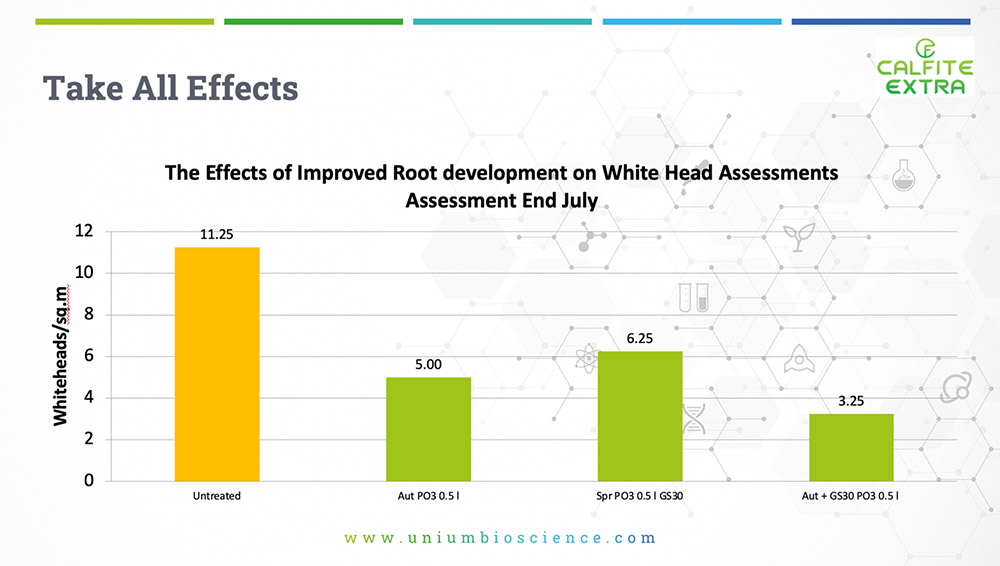
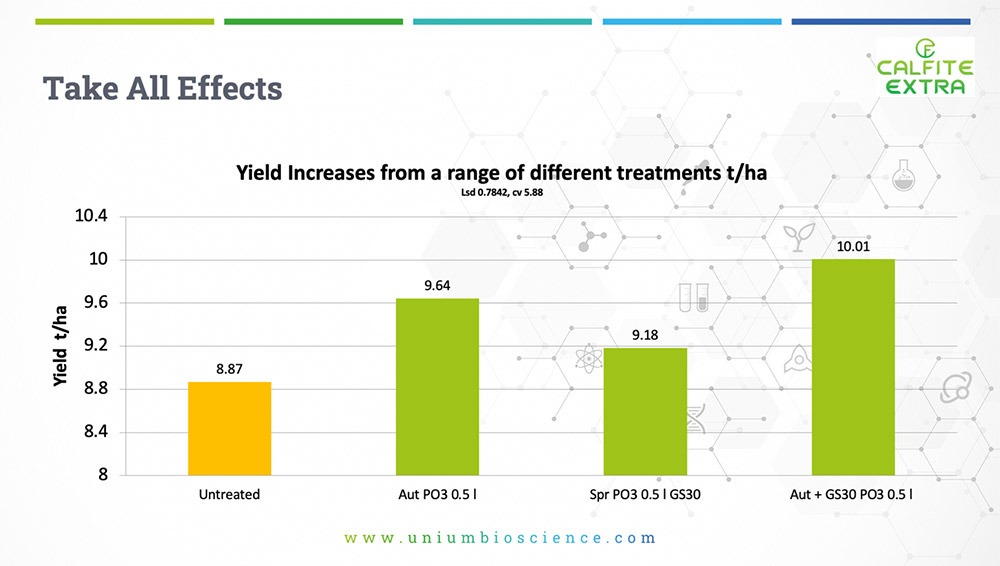
- Nutritional impacts
Zinc – ensure it is at adequate levels to reduce Take-All (Reis et al 1982, Brennan 1992)
Potassium – this increases take-all if N & P are deficient but it reduces levels if N & P are adequate. (Huber 1989)
Phosphorus – P decreases levels of take-all in general but it needs to be correlated with N. It is also critical to link to exudation – if you have high P fertiliser levels around the roots (starter fertilisers) the crop will generally produce less exudates reducing the impact on the rhizosphere pH (making it less acidic ~ more conducive to take-all) and take-all levels will increase, with increased root growth and exudation levels decrease.
An alternative approach employed is to include Luxor as a foliar option to support Phosphorus availability. As the combination with Calfite Extra proved so successful we have now launched Luxical as a formulated product.
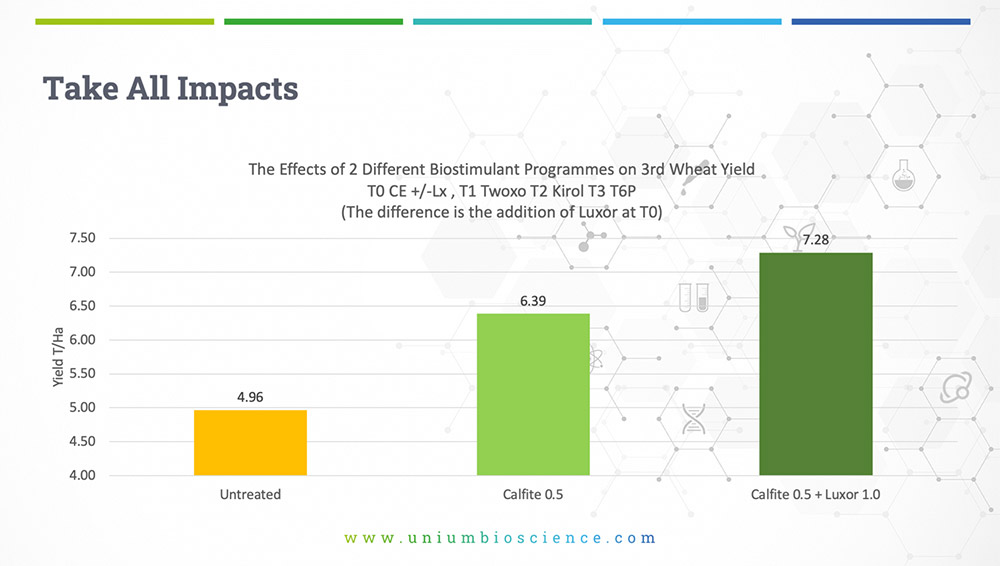
Nitrogen – ammonium treated crops have smaller lesions than nitrate treated crops. Ammonium tends to have a positive impact on take-all compared to Nitrate which can increase levels.
Manganese – this is a complex relationship between the Mn with the environment, host and pathogen. Ensuring Mn is in its reduced form will reduce take-all levels as factors increase oxidation then the levels will increase e.g. Mn oxidising bacteria, (oat exudates reduce these bacteria and can aid control). Having adequate levels in the plant is also critical to reduce infection and aid plant tolerance.
Copper – this can aid in several ways to reduce levels – direct toxicity, increased plant resistance and decreased pathogen virulence.
Conclusion
Take-all is a persistent threat in wheat production, especially under intensive cereal systems. Effective management requires a combination of good rotation planning, soil care, timely agronomy, and appropriate seed treatments. While no single method eliminates the disease, integrating multiple strategies can significantly reduce its impact and help maintain sustainable wheat yields.
We hope you have found this useful with a few added thoughts for consideration in how to maximise your 2nd, 3rd or continuous wheat crop.

